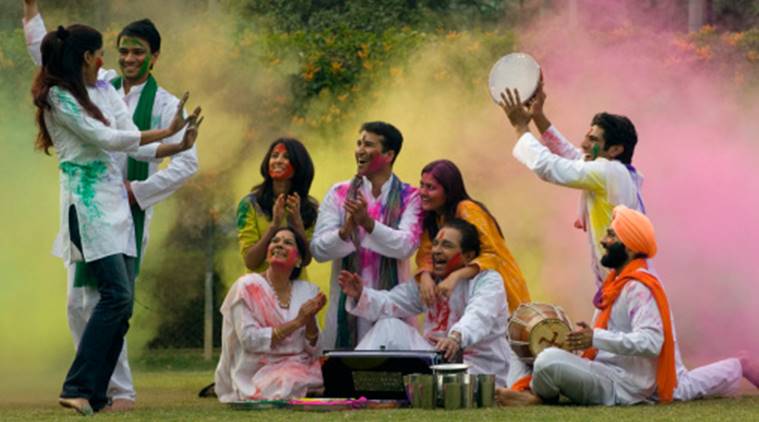 Holi 2020: The festival marks the victory of good over evil. (Source: Getty Images)
Holi 2020: The festival marks the victory of good over evil. (Source: Getty Images)
Holi 2020: The festival of colours, is celebrated to mark the end of winter and the arrival of spring. An ancient Hindu festival, Holi has become popular among non-Hindus as well and is celebrated across different parts of the world, in addition to India. It is known as “Dol jatra” or “Basanta utsav” in West Bengal, Assam and Tripura.
On the day of Holi, people come together and smear dry and wet colours on each other. They also play with water-filled balloons and water guns. As any other festival, people also treat each other to special Holi delicacies like gujiya and bhang.
Celebrations for Holi begin on the evening of Purnima or full moon day, in the Hindu calendar month of Phalguna that falls around the middle of March. This year, the festival will be celebrated on March 9-10.
Read| 5 simple ways to help with your Holi bhaang hangover
Significance of Holi
The main celebrations of “Rangwali Holi” is preceded by “Holika Dahan”, where people worship Holika, a demoness, and perform rituals around a bonfire. Legend goes that King Hiranyakashipu, the ruler of demonic Asuras, earned a boon that he could not be killed neither by a human nor animal, neither indoors or outdoors, neither at day nor night, neither by a weapon, and neither on land, water nor air.
Hiranyakashipu wanted everyone to worship him but could not convince his son Prahlada, who remained devoted to Lord Vishnu. The king then began to subject his son to cruel punishments. Prahlada’s aunt Holika tricked him into sitting on a pyre. But the cloak Holika was wearing to protect herself flew off and encased Prahlada, who survived. Meanwhile, Lord Vishnu appeared in the Narasimha avatar–half lion-half human, at dusk, took the king by the doorstep, placed him on his lap and killed him with his lion claws. The Holika fire is burned to celebrate the victory of good over evil.
This festival also commemorates Radha and Krishna’s love. It is believed that Krishna complained to his mother Yashoda about him having a dark complexion and Radha being fair. To pacify Krishna, his mother asked him to go and colour Radha’s face. This playful colouring came to be celebrated as Holi.